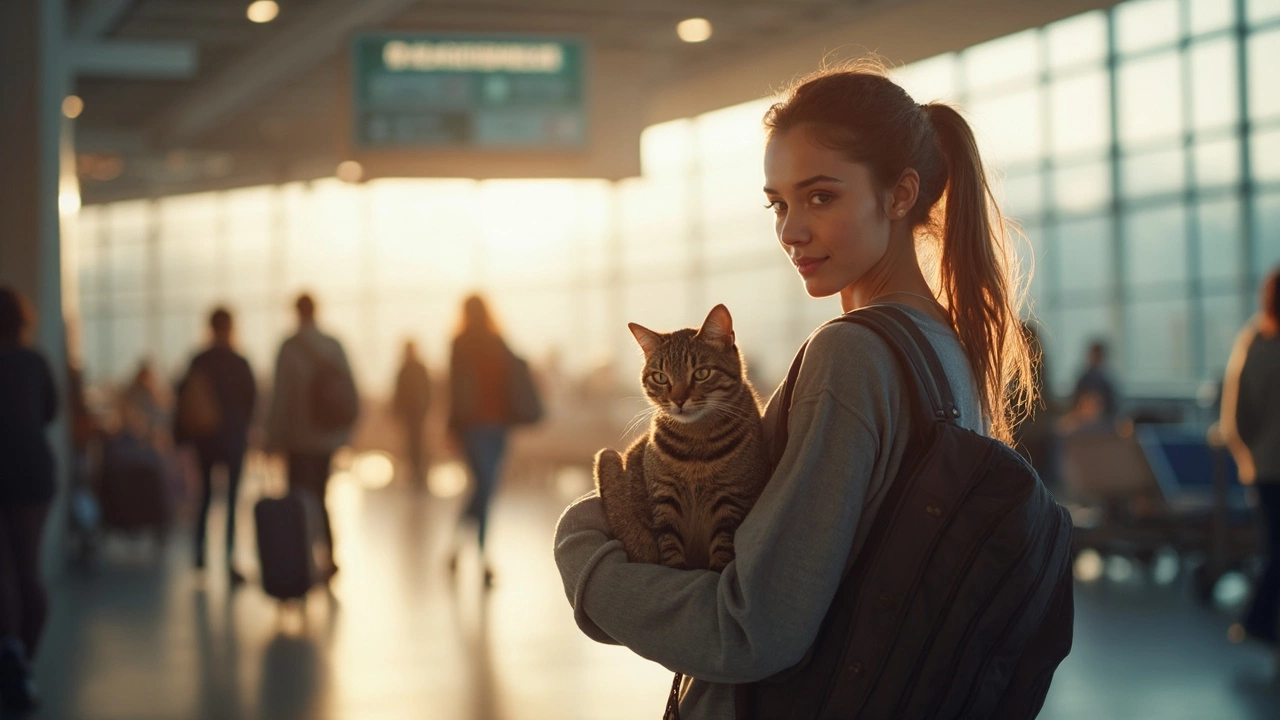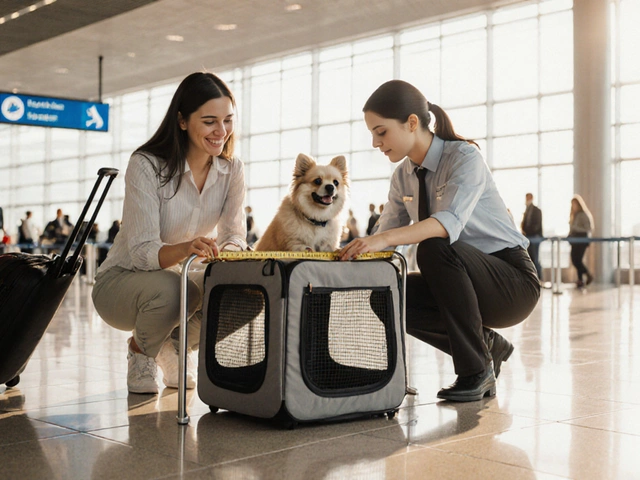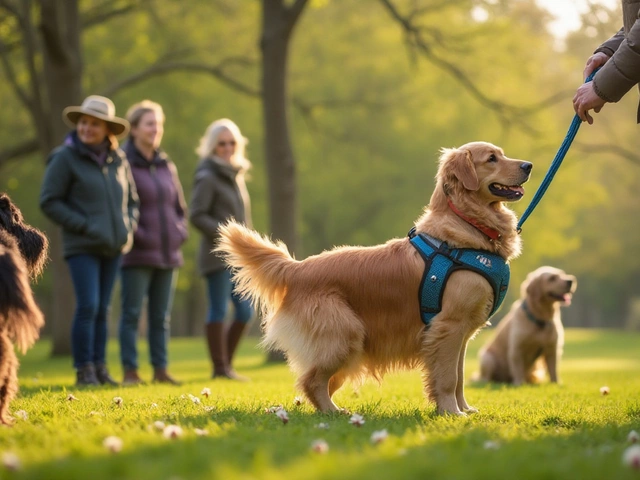Traveling with a pet isn't just about throwing them in the backseat and hitting the road. It's way more than that. First off, you need to think about the most comfy and safe way for your pet to travel. Car rides? Plan for breaks and always use a pet seatbelt or carrier. Flying? Research airlines' pet policies, as they can differ a lot.
Finding pet-friendly places to stay is another key step. Not every hotel or rental is keen on having your furry pal tag along, so you'll want to book ahead and confirm their policies. Plus, it saves you from a stress-induced panic search while on the road.
- Choosing the Right Mode of Travel
- Pet-Friendly Accommodations
- Airlines and Pet Policies
- Preparing Your Pet for Travel
- Travel Essentials and Gear
- Keeping Your Pet Calm and Safe
Choosing the Right Mode of Travel
When it comes to pet travel, not all modes of transport are created equal. Whether you’re embarking on a cross-country adventure or a short trip, selecting the right travel method is crucial for ensuring your pet’s comfort and safety.
Road Trips
For many, a car journey is the simplest way to travel with pets. However, it’s not just about strapping them in and going. Make sure you have a secure carrier or a pet seatbelt. Regular pit stops are vital; they give your furry friend a chance to stretch and relieve themselves.
A great tip is to bring their favorite blanket or toy for familiarity. And don’t forget to pack plenty of water and a travel bowl.
Flying with Pets
Airlines often vary significantly in their pet policies, so the first step is to check if your chosen airline allows pets in the cabin or requires them to go in cargo. Smaller pets typically fit in carriers that tuck under the seat, while larger animals may need to travel in the cargo hold.
Research shows that pets traveling as carry-on luggage generally experience less stress than those in cargo. However, always prepare and avoid sedating your pet unless instructed by a vet, as it can affect breathing.
Trains and Boats
If your route includes a train or ferry, check their pet policies in advance. In Europe, for instance, many trains permit pets if they’re in a carrier or on a leash. Ferries often allow pets on deck but might restrict access to indoor areas.
Some routes might surprise you with unexpected rules. Bring necessary documents since some modes of transport require proof of vaccination or a health certificate.
| Mode of Travel | Pet Policy |
|---|---|
| Car | Secure carrier or seatbelt, regular breaks |
| Air | Check airline policy, cabin or cargo options |
| Train | Carrier or leash required, varies by region |
| Boat | Pets allowed on deck, restrictions indoors |
Hopefully, this helps you better understand the choices you have for traveling with your pets and makes the process a little less daunting. Whether by land, sea, or sky, your pet’s safety should always be top of mind.
Pet-Friendly Accommodations
Finding pet-friendly accommodations isn't as hard as you might think, but it does take a little planning. Before you book, always check the hotel's policy on pets. Many places, from budget motels to luxury resorts, welcome pets, but it's crucial to know the rules before you arrive. Some might have weight limits or breed restrictions.
The Search for Pet-Friendly Options
Your best bet is to use travel websites and apps with filters for pet-friendly accommodations. Sites like BringFido or Airbnb have specific options to narrow down your search. Make sure to read reviews. Pet owners love to share their experiences, so you can get a sense of what to expect before you decide.
Understanding Pet Fees
Be prepared for additional pet travel fees. Some places charge a non-refundable cleaning fee or a deposit. On average, these fees can range from $25 to $100 per stay, depending on the hotel chain and location. It's money well spent for the peace of mind knowing your pet is welcomed.
Amenities to Look Out For
When considering where to stay, see if they offer amenities for pets. Things like pet beds, outdoor areas for walks, and even on-site pet sitters can enhance your stay. Plus, finding a place with a dog park nearby or even a pet spa can make it feel like a getaway for your furball too.
| Hotel Chain | Pet Fee | Notes |
|---|---|---|
| Marriott | $75 per stay | Check specific locations for details |
| Hilton | $50 per stay | Max 2 pets per room |
| Motel 6 | Free | Pets stay free |
Once you're set on where to stay, call ahead a couple of days before arriving. Confirm the reservation for you and your pet. This simple step can prevent any last-minute surprises.
Airlines and Pet Policies
Flying with your pet can feel like navigating a maze, but it doesn’t have to be. The key is to know different airlines and pet policies beforehand, so you're not caught off guard. Policies can vary a lot between airlines, and often depend on your destination, as well.
Essential Steps for Flying with Your Pet
- Check if the airline allows pets on board and their specific requirements.
- Choose between cabin travel or cargo, depending on your pet's size and airline rules.
- Book your pet's spot early as airlines usually limit the number of pets per flight.
- Get familiar with the check-in process, some airlines require pets to be checked in much earlier than human passengers.
Cabin vs. Cargo
If you've got a small pet (usually under 20 pounds), they might be able to join you in the cabin. This is often the most comfortable option for pets. However, medium to large pets will have to go in the cargo hold, which can be stressful, so make sure they're adequately prepped for the journey.
Important Airline Policies
United Airlines, for example, allows small pets in the cabin for a fee, provided they fit in a carrier under the seat. Delta Airlines also allows pets in the cabin, but they require your furry friend to be up-to-date on vaccinations. Meanwhile, American Airlines has restrictions on specific routes and temperatures, so always check beforehand.
| Airline | Pet Policy Highlights |
|---|---|
| United Airlines | Pets allowed in cabin; fees apply. |
| Delta Airlines | Requires pet vaccinations; cabin travel allowed. |
| American Airlines | Route and temperature restrictions; check updates. |
Understanding these pet travel rules can make a difference in how smoothly your journey goes. So, dive into the details, prepare accordingly, and you and your pet will be ready for takeoff!

Preparing Your Pet for Travel
Getting your pet ready for a trip isn't just about tossing some food in a bag. It's about getting them comfortable with changes and ensuring they're healthy and happy for the journey.
Visit the Vet
Before packing up, hit up the vet for a quick check-up. A clean bill of health is a must. Ask about any recommended vaccinations, especially for traveling with pets to new areas where different diseases might be present.
Familiarize Your Pet with the Carrier
If your pet travel involves a crate or carrier, introduce it well before the trip. Leave it open at home with a treat or toy inside, so they see it as a positive space. Tried and true tip: keep it cozy with their favorite blanket.
Pet Training for Travel
If your pet isn’t used to being on a leash or behaving while traveling, now’s the time to train. A few basic commands can prevent a lot of chaos. Practice short car rides and train for calm behavior during travel.
Feeding Schedule Adjustments
Adjust their feeding schedule so mealtime doesn’t coincide with travel, mainly to avoid any tummy troubles. Feed them a meal three to four hours prior to departure.
Quick Packing Tips for Your Pet
- Make a checklist with essentials like food, water, bowls, medication, and familiar toys.
- Ensure ID tags and microchip details are up to date.
- Bring a recent photo of your pet — just in case you get separated.
- Consider a pet first aid kit — better safe than sorry!
With these steps in mind, you'll set the stage for a safe and enjoyable trip with your pet. After all, they deserve to enjoy the ride as much as you do!
Travel Essentials and Gear
When hitting the road or the skies, having the right gear is crucial for a smooth trip with your pet. The whole idea is to nail the essentials without overpacking. So, what exactly do you need?
Must-Have Items
First, you need a sturdy carrier or crate. It's like their home away from home. Having a durable carrier ensures that your pet stays secure during your adventures. Make sure it’s well-ventilated and the right size. As a rule of thumb, your pet should be able to stand up and turn around comfortably.
Another must-know? Food and water supplies. It’s important to keep your pet hydrated and fed throughout the journey. Bringing collapsible bowls can save space and are super handy. Nowadays, many pet travelers swear by them.
“Having the right travel essentials can significantly reduce stress levels for both the pet and the owner,” says Laura Jenkins, a respected pet travel expert.
Comfort and Safety
Don’t forget comfort items like a blanket or a favorite toy. Familiar scents can reassure pets and help them feel secure amidst all the hustle and bustle. For safety, a pet seatbelt is key when traveling by car. It prevents sudden movements, keeping your furry buddy safe during sudden stops.
Travel Health Kit
A small first-aid kit can be a lifesaver. Pack it with basics like bandages, pet-safe antiseptic wipes, and any prescription meds your pet might require. This way, you’re prepared for minor health hiccups on the go.
Additional Accessories
If you're flying, consider ear muffs for your pet. Some pets are sensitive to cabin pressure changes, and ear muffs can help ease discomfort. For longer road trips, a pet GPS tracker can be invaluable if your pet decides to go on an unexpected adventure.
Pet travel essentials are all about keeping things safe, simple, and convenient. Always tailor your gear based on the mode of travel and your pet’s specific needs.
Keeping Your Pet Calm and Safe
When you're on the road, or up in the air, your pet's comfort is key. A stressed-out furry friend can turn your trip into a headache. So, what can you do to keep them chill? Well, let’s break it down.
Know Your Pet's Triggers
Start by identifying what stresses your pet out. It could be loud noises, unfamiliar places, or even being in a small space for too long. Once you have a good idea of their triggers, you can plan ahead. If flying is hard for your pet, consider car travel, which might be less stressful.
Training and Conditioning
With some time and patience, you can train your pet to get used to different travel scenarios. Take them on short car trips to build their tolerance gradually. Reward them with treats for behaving well. For flights, a practice run to get them accustomed to their carrier can do wonders.
Essential Gear for Comfort
- Pet travel carriers: Choose one with good ventilation and enough room for movement.
- Comfort items: Pack a favorite blanket or toy to give a sense of familiarity.
- Snacks and water: Always have these handy to keep your pet fed and hydrated.
Medication and Calming Products
If your pet gets extremely anxious despite your best efforts, talk to your vet. They can prescribe medication or suggest natural calming aids like CBD oil. Some calming collars release pheromones that mimic the scent of a nursing mother, which can help ease pet anxiety.
Regular Breaks
If you're driving, regular stops are crucial. Give your pet a chance to stretch and relieve themselves. A little fresh air doesn't hurt anyone!
| Travel Type | Recommended Breaks |
|---|---|
| Car | Every 2-3 hours |
| Plane | N/A, provide in-body comfort for long flights |
If you follow these tips, you'll likely find that both you and your pet have a smoother, more enjoyable journey. Remember, happy pet means happy travels!







